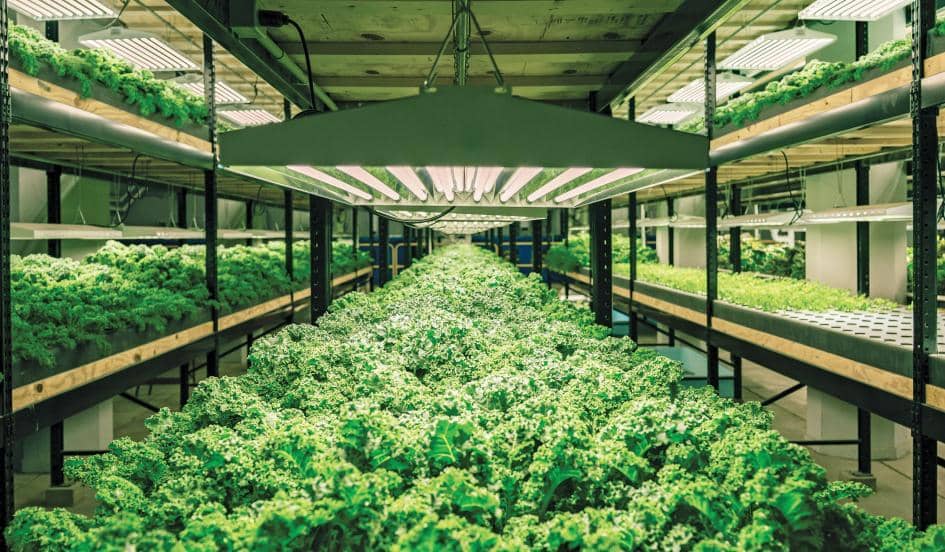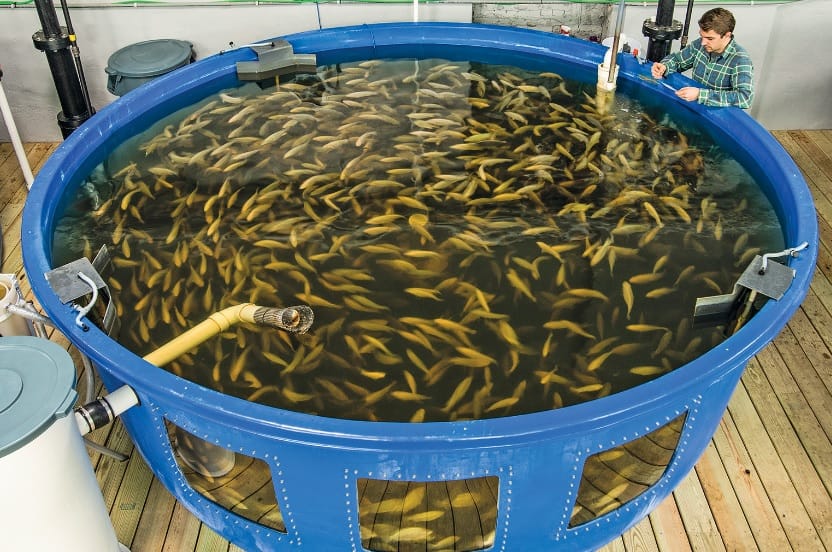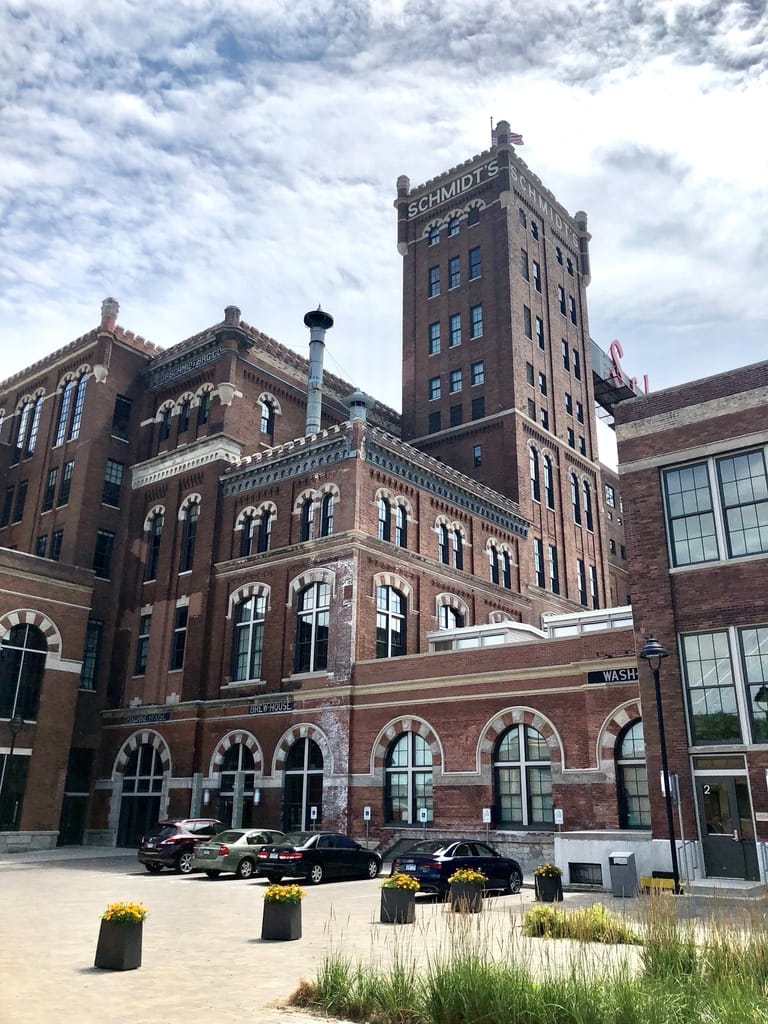
In April of 2014, the Minneapolis Star-Tribune reported on a venture called Urban Organics. The concept was aquaponics, a system of growing plants using fish and bacteria to produce nutrients for the plants. I commented on this article here. Over the past five years, both Urban Organics and the concept of aquaponics have made progress in the world. An article on Urban Organics recently appeared in Outside magazine.
Today’s brewery, tomorrow’s farm

In 2014, Urban Organics was using the Hamm’s brewery on the east side of St. Paul, Minnesota. Since then, they have moved to the Schmidt brewery, which closed as a brewery in 2002. The Hamm’s location is about a tenth of the size of the Schmidt location. Urban Organics General Manager Dave Haider explained, “Breweries are great for aquaponics, as they need a source of water, which we have in the form of well houses on site. They also have strong foundations built to handle large volumes of liquid.” Today’s brewery, tomorrow’s farm.
A growing worldwide idea
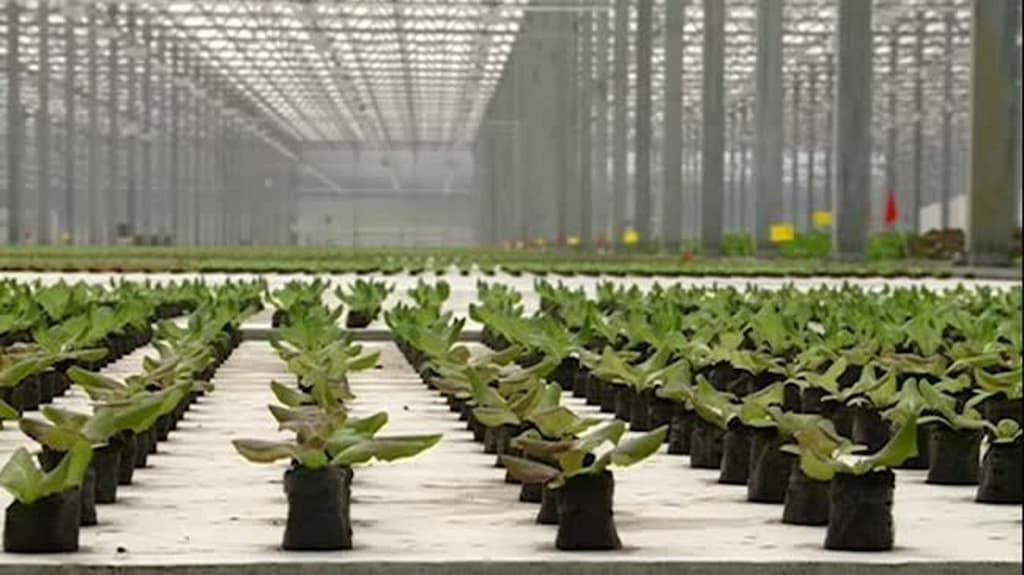
It is my understanding that in 2014, the world’s largest aquaponics facility was in Abu Dhabi in the United Arab Emirates. Since that time, aquaponics projects of larger scale have been launched in both the USA and China. Superior Fresh in Wisconsin is scheduled to produce 160,000 pounds of Atlantic salmon each year, and 30,000 heads of lettuce each day. The floating wetlands project in Lake Taihu is not only growing food, but removing the nutrients fueling unwanted algae blooms.
A vote of confidence
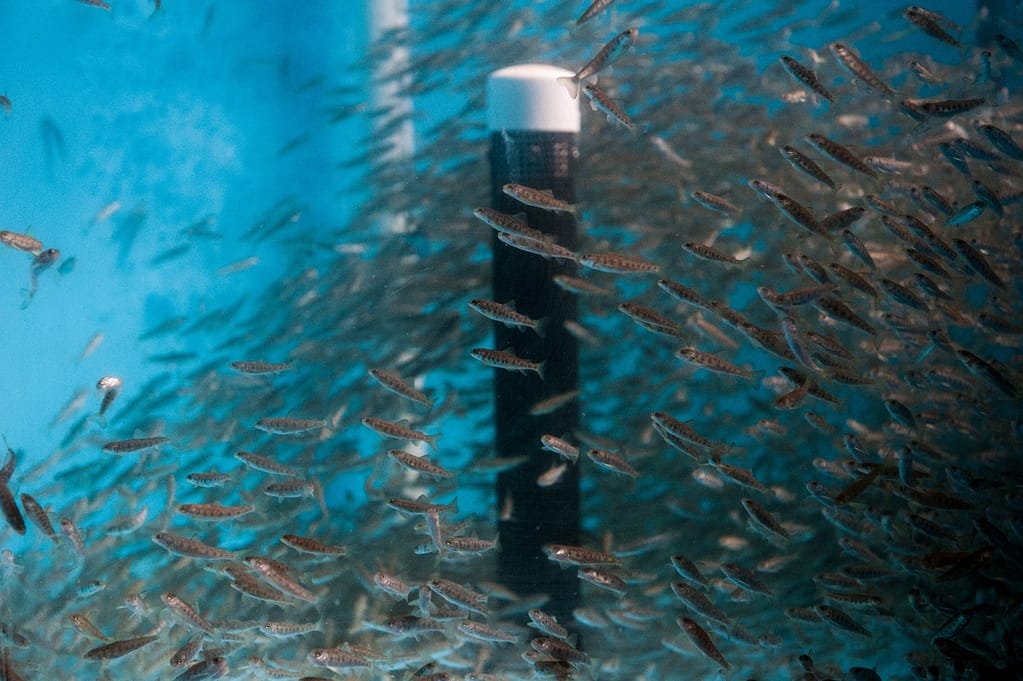
Large-scale aquaponics projects have also failed in the past. They have failed in the past due to difficulties with the filtration system. Many aquariums have died painful deaths due to difficulties in managing the levels of nitrites in the water. Likewise, many aquaponics facilities have died painful deaths due to difficulties in managing the levels of nitrites in various stages of the project. In 2014, in the Hamm’s facility, Urban Organics was using a recirculating aquaculture system designed, built and contributed by Pentair Aquatic Eco-Systems. Since that time, Pentair, a $7.2 billion global corporation, has purchased Urban Organics outright for an undisclosed sum. I consider this as a vote of confidence that the technical problems that have plagued aquaponics projects in the past can be solved. I consider this a vote of confidence in the future of aquaponics. Today’s brewery, tomorrow’s farm.
A few technical details
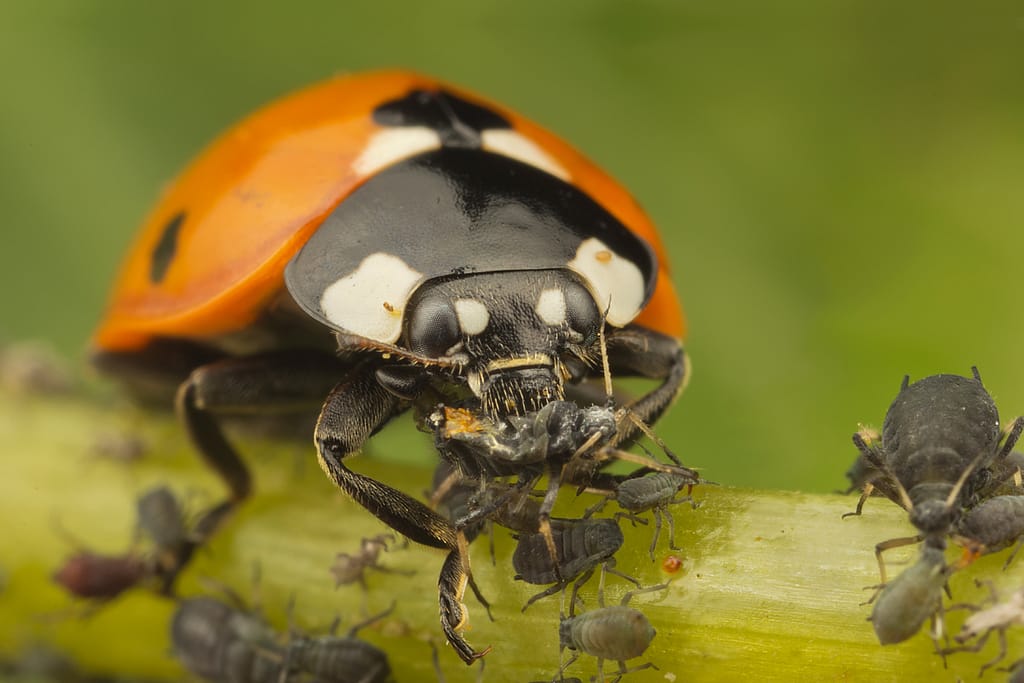
In 2014, Urban Organics was using tilapia as the fish. I don’t know why they stopped. An attempt was made to use Atlantic salmon. This attempt failed when the fry contracted a disease. It is unclear to me what would make a particular fish well-suited for aquaponics. But in 2019, Urban Organics is using rainbow trout and arctic char, and reporting success. There was no mention of a hatchery at the Hamm’s facility. The Schmidt facility includes a fish hatchery. There was no mention of insect control in 2014, but in 2019, wasps, ladybugs and mites perform organic pest control. Quite a few refinements have been made to the process over the past five years.
Entering the marketplace

In 2014, Urban Organics was supplying one grocery story in downtown St. Paul. In 2019, their greens mixes appear at supermarkets and co-ops around the Twin Cities. In my local grocery store, the price is comparable to established brands of organic produce. Their char is available at chain of local seafood stores.
A bigger deal than salad

I take particular interest in Urban Organics because it is a way of producing food that cannot be disrupted by climate change. The New Message from God teaches that humanity has changed the climate to the extent that it will begin to change on its own. Over the years, the climate will change in ways unfriendly to traditional agriculture. This paragraph is from the revelation “The Race to Save Human Civilization.”
“Primary here is literally how will you feed the peoples of the world when the world loses 30% of its agriculture, which is what you are really facing, you see? Violent weather, the change in the climate and the impact upon the world’s geologic and biologic systems will create so much imbalance that even if you could find a home for all of the displaced peoples, how would you feed them? And the residents of the receiving nations, how will they respond towards this?”
The New Message from God teaches that “a thousand solutions” are needed to respond to an increasingly difficult world. I consider Urban Organics to be one of those thousand solutions. I offer gratitude for their progress, and best wishes for their future success. Today’s brewery, tomorrow’s farm.
Welcome to Mystery of Ascension! We are students and advocates of the the New Message from God. We are members of a worldwide community. We seek to assist the world in successfully navigating difficult times ahead. We seek to assist the world in successfully emerging into a greater community of intelligent life. You will also find some poetry. Find out more about us here. Contact us here.

